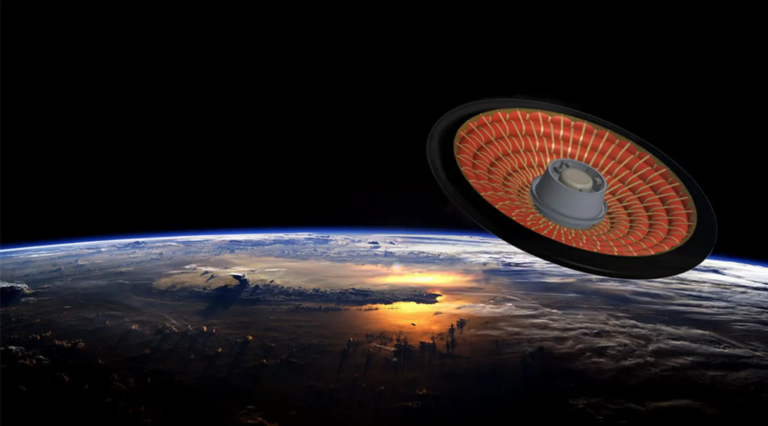NASA has successfully concluded the technology demonstration phase of its Low-Earth Orbit Flight Test of an Inflatable Decelerator (LOFTID) mission, marking a significant stride in the development of technology that could play a pivotal role in landing humans on Mars.
Traditionally, NASA has employed rigid aeroshells, parachutes, and rockets for the deceleration of people, vehicles, and hardware during entry, descent, and landing on celestial bodies with an atmosphere. Over more than a decade, the space agency has dedicated efforts to develop its Hypersonic Inflatable Aerodynamic Decelerator (HIAD) technology, with the LOFTID orbital flight test representing the latest advancement in the program. The LOFTID reentry vehicle, boasting a diameter of 6 meters, stands as the largest blunt body ever to enter atmospheric entry, as reported by NASA.

The application of HIAD technology during reentry is pivotal. As a spacecraft enters a planet’s atmosphere, drag acts upon the body, slowing it down and converting kinetic energy into heat. The substantial size of the HIAD device generates more drag, initiating the deceleration process at higher altitudes in the atmosphere compared to traditional aeroshells. This not only enables the landing of heavier payloads but also facilitates landings from elevated altitudes. Moreover, the technology holds potential for retrieving sizable objects from Earth’s orbit, such as items from the International Space Station. NASA envisions its use in recovering rocket assets after launch.

The design of a HIAD device features an inflatable structure capable of maintaining its shape against drag forces. Additionally, it incorporates a flexible thermal protection system for heat protection during reentry. The structure comprises a stack of pressurized concentric rings made from braided synthetic fibers, boasting a strength 15 times that of steel. The entire system is foldable, packable, and deployable, optimizing space on rockets and allowing for scalability in design.












